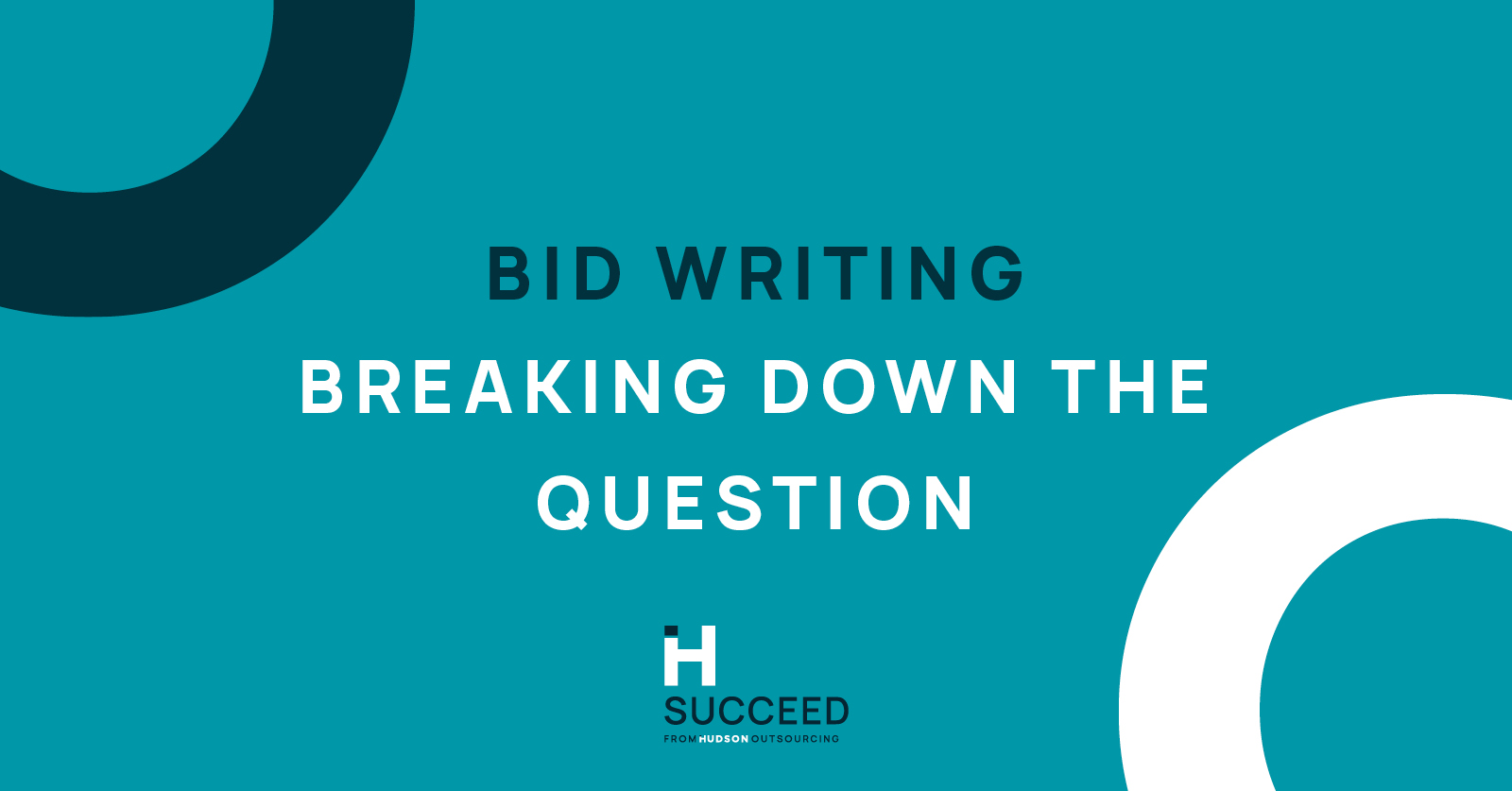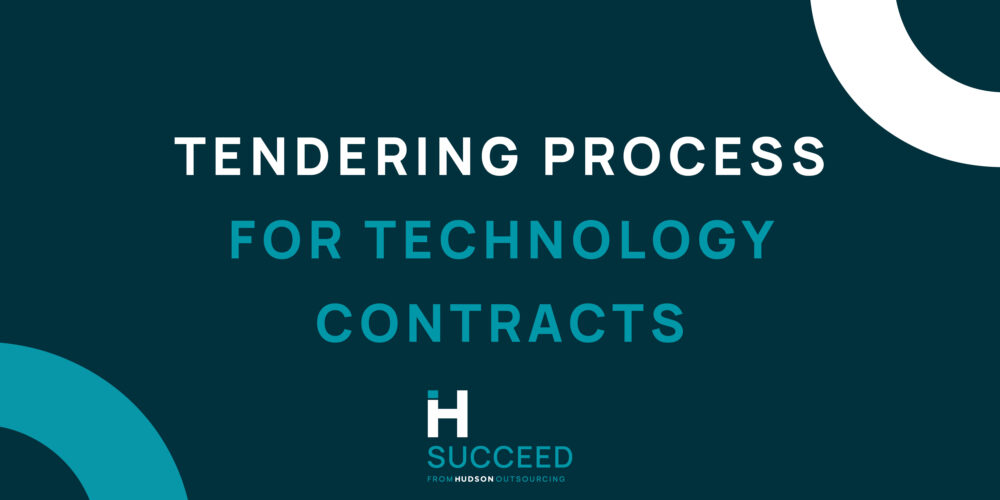Bid Support – How to breakdown the question
Last updated: Jun 7, 2022 @ 3:47 pm
If you do not know what the question is asking – this is your first hurdle.
In order to jump that hurdle, carefully examine what kind of question it is.
Although there are hundreds of question variations out there, we’re showing you a way in which to tackle every question you get through a very simple breakdown technique.
Examining the question
Does the question have (what it seems like) 10 questions in one? Does it look something like this:
EXAMPLE 1: Please explain your risk management procedures, including what risks you feel are vital to overcome as part of this contract, as well as monitoring and mitigation approaches you would use. Please detail who will manage said risks and provide examples of where you have overcome similar risks.
This question asks for a lot of information and the first step to jump this hurdle, is to tackle it bit by bit. We break this question down into more manageable chunks, allowing clear-cut focus on every aspect of the question, making it easier for the evaluator to mark us against their evaluation criteria. We have pinpointed these out and, as part of our bid support, always encourage you to write out sub-headings to manage this effectively. Such as:
General risk management procedures
Contract-specific risks:
- Risks
- Monitoring
- Mitigation.
Risk lead
Risk Management Experience
Under each subheading, you can then start to write your content.
Sometimes, however, the question is not that easy to break down and maybe a lot smaller, making the whole manageable chunks scenario more difficult.
Does the question ask you to explain, describe, or provide detail of a process and/or situation? If so, this is a useful way of the buyer seeing how well you respond to this and how you’re reacting to their requirements.
Open questioning allows the buyer to ask for a lot of information with a short question.
EXAMPLE 2: Describe how you manage risks?
This question is 5 words long; however, your response limit can be in excess of 5,000 words, dependent on your offering and sector.
The management of risks may have reams of information attached to it. The important thing to do is break this down into smaller subheadings and further questioning.
Evaluation guidance
Sometimes the buyer can be quite extensive in their evaluation guidance and based on this, you may already have your subheadings laid out for you, dependent on what the buyer is looking for/marking during the evaluation stage.
If the evaluation guidance doesn’t provide much detail – then look at the specification and make sure you fully understand what the client is looking for, so you can start breaking your response down into further discussion points.
For example: Your subheadings for the above example may be;
- Recognising Risks– detailing how you identify/assess risks?
- Monitoring Risks– what system you use to track these risks?
- Risk Responsibilities– who maintains responsibility for managing risks?
- Mitigating Risks– what do you do to mitigate said risks?
- Risk Reviews– how often do you review these to adapt to change?
- Contract Risks– what you feel are the top risks for this particular contract?
- Compliance– what national standards/best practice do you comply with?
These are merely seven subheadings you can write about when drafting your response.
Depending on what the contract is for and the specification included – there could be a whole load of various points you need to discuss.
This is merely a small step when looking at a tender response, but a very important one. We are by no means English teachers, but when it comes to developing a response to accommodate buyer’s needs and requirements, we know what we are talking about!
The DAPCAS model
Bid writing support can be varied and contradictory – that’s why we invented the DAPCAS model, to boil down the tendering process into its most simplistic formula. Here is a short breakdown to outline the parameters of the model.
D is for Decipher
Before you start tendering you need to decipher the opportunities that you want to go for.
Do NOT just go for any opportunity in the hope of being successful. This is not only a waste of time and money but weakens your overall tendering approach.
When starting any business, these are some of the questions you need to ask yourself, so that you understand your place in the market and set defined goals to succeed in tendering.
Start by asking yourself three simple questions; What services do you ideally want to deliver? Where do you want to deliver these services? and Who is your ideal buyer?
Once you have the answer to these questions, you then need to source the relevant opportunities. You can do this by signing up to our sector-specific portals, where you can receive daily tender opportunities that remain specific to your service/offering. Our service will signpost you directly to the client/buyer via published notices across the thousands of websites/portals that remain across the UK alone.
A for Assess
To bid or not to bid. That is the question!
After you have deciphered what you want to start tendering for, and you have sourced an opportunity, you then need to conduct an assessment to make sure it is 100% worthwhile. Remember the contract title doesn’t tell you everything!
A few questions to try answering, in order to gauge the feasibility of the bid are; Have you delivered work like this before? Do the opportunity outcomes align with your long-term strategy? Is it financially viable? What is your USP in the market sector?
Have a look at our ‘To Bid or Not to Bid’ for further information into ways of assessing the opportunity at hand.
P for Plan
One of the deciphering factors, as to whether your bid will be successful, is the planning of the whole tender process itself.
Each tender is different and in turn, the planning must evolve to match the specification. You should define clear-cut milestones for what needs to be actioned, when and who is responsible for the deliverables.
The volume of an Invitation to Tender (ITT) can range from half a page to 100 pages long and contain pertinent information that it is imperative to consider. Our bid writing support experts advise that each document should be read one by one with the following aspects in mind;
- Reading Instruction – You should over-allocate time for this step as the instructions should contain everything from practicalities such as where to submit the tender to design requirements for word count, font size and style.
- Submission Deadline – Obviously this is a crucial aspect as tender deadlines are very strict, a delayed submission of one minute could result in the dismissal of your bid.
- Clarification Deadline – Some aspects may be unclear or missing from the specification, this is your chance to ask questions so also keep a note of this deadline.
C for Compose
Business owners/managers may not have the time, skills or resources to pull together a high-quality bid that is concise, detailed and exceeds buyer expectations. Writing is not everyone’s cup of tea – especially when you operate a fully functioning business.
Hence the reason why bid writing support exists and our Tender Consultants offering is highly sought.
However, should you wish to carry out the writing process yourself, there is one fail-safe process to ensure high-quality results. The PEE method;
- POINT – This is where you state what you are going to do, or what you are already doing. This should be clear and concise.
- EXPLAIN – As it says on the tin, explain how you are going to deliver the desired outcome.
- EVIDENCE – It is no good talking about achieving something if you can’t back-up the fact that you have already accomplished something to demonstrate that you are a worthy winner.
A for Analyse
This step is something that remains an absolute necessity throughout the tendering process. We advise that you create multiple drafts and have them reviewed by multiple colleagues or be even more thorough and ask a new employee to read over the document to ensure that the inner workings of your company can be understood by somebody with little prior knowledge of your structure and function.
You should never assume that the reader shares the same depth of knowledge about your company as you.
S for Submit
As simple as this step might sound, to a tender newcomer, it can be very daunting. You should take thorough precautions to ensure that your bid is submitted within the deadline.
If the bid is due in at 13:00 and you submit it at 13:01 – you’re out!
Once you have successfully submitted the bid you should always receive some form of acknowledgment that the bid has been received, this is most commonly done via email or an online portal.
Further support
Need further bid support? Get in touch now with our Bid Writers to find out how they can support you in writing winning bids when tendering for contracts.
Start by receiving those all-important opportunities today by booking a free demo from one of our 11-industry-specific portals, dedicated to helping you DISCOVER the right tender opportunities to bid for!
CLICK HERE for further information!
Find more helpful tips and advice in our blogs. We cover topics including:










